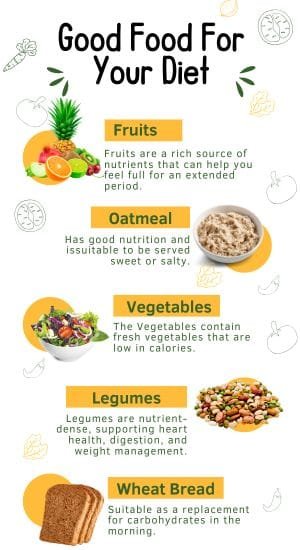Readability Improved Content: Introduction.
In our fast-paced world today, it is no secret that eating a good, healthy, balanced diet is essential. One new treatment approach is the Low Amylose Diet. This can be helpful for those who have digestion issues such as IBS or celiac disease. It can also assist in blood sugar management. So what is the Low Amylose Diet, and how can it help you?
In this article, we will explore what amylose is. You’ll also learn how a low-amylose diet functions. That also applies to the benefits of health. We’ll also tell you how to incorporate it into your daily eating. There is valuable information in this guide. Dr X: This can guide you to make healthy lifestyle choices.
What is Amylose?
Amylose is a type of starch in many foods, such as grains, vegetables, and beans. This is composed of glucose molecules. Amylose is one of starch’s two main parts. The second part of it is amylopectin.
Amylose and amylopectin are two polysaccharides. But they are structured differently. Amylose has a straight shape. This gives it a structure that is digested more slowly than amylopectin, which is branched. Amylose is digested more slowly, which can affect your body differently. It may affect your blood sugar levels and gut health.
How does a low amylose diet work?

A Low Amylose Diet restricts foods high in amylose. This can aid individuals suffering from digestive disorders such as IBS. The diet provides different health advantages, including:
Improved Digestion: Amylose can be difficult for some individuals to digest. That can lead to bloating, gas, and discomfort. If you eat less amylose, your digestive system will feel lighter.
Food digests slowly—amylose. This leads to a slow increase in blood sugar. Eating less amylose might help stabilize blood sugar. For diabetic individuals, this is crucial.
Decreased Inflammation: High amylase reduces gut inflammation. This is often associated with chronic health issues.
Digests Very Slowly: Low-Amylose foods might help you feel full for longer. This can be beneficial for weight control.
Advantages of a Low Amylose Diet
1. Supports Digestive Health
Hard-to-digest foods worsen digestive issues such as IBS, bloating, and gas. These foods can ferment in the colon, leading to discomfort. EO disease-caused amylose-enhanced sensitivity may cause bettering for the EOpairs.
2. Regulates Blood Sugar
Amylase-resistant starches are found in many foods with a high amylose content. This results in a gradual and consistent release of glucose into the bloodstream. This aids in managing blood sugar spikes. This helps people with diabetes or at risk of developing diabetes in particular.
3. Helps Manage Inflammation
Amylose digests more slowly. This means it has a longer time in the digestive system. In some individuals, this can lead to gut inflammation. Eating amylose can counteract this to an extent. This supports gut health overall and reduces inflammation in the body.
How to Make the Most of Your Lavender Green Tea 👉 Learn More
Foods to Include in a Low Amylose Diet

Vegetables
Certain vegetables (low in amylose) also contain essential vitamins and minerals. Some examples are:
Spinach 395 However, now you’ve digested that оп-sea double green Andy-tripleheacamole. Lettuce. Zucchini. Tomatoes. Carrots. Cucumbers.
Fruits
Expanded readability version: Many fruits are low in amylose. These fruits may be included in a healthy diet. For example, these include:
Berries such as strawberries, blueberries, and raspberries are a good choice. Oranges are good for you, too. Apples are yet another healthy fruit. Pineapple is yummy and nutritious. Bananas can be included in a healthy diet but should be consumed in moderation.
Grains and Starches
Most grains yield a lot of amylose, but some produce less. Lower amylose grains include, for instance:
Constructed output: White rice refers to a variety of rice. Quinoa is a grain. Because oats are a grain too—instant oats in particular. Cornmeal is dried corn processed into a powder.
Legumes
Legumes are a type of plant. They tend to be highly nutritious and high in both fiber and protein. However, certain legumes are lower in amylose. Amylose is a type of starch. For some individuals, these legumes with lower amylose may be beneficial.
Lentils are great. They work best with red lentils. Chickpeas are also very nice. Black beans are another delicious choice.
Avoid these foods on a low-amylose diet.
Some foods benefit from a low-amylose diet, whereas others should be limited or avoided. These include:
Good choices include whole grains such as whole wheat bread and brown rice. Potatoes, particularly when cool, are also a safe bet. Starchy veggies like peas and sweet potatoes are also good. Amylose starches are common in processed foods.
How to Shift to a Low Amylose Diet
A low-amylose diet can be challenging to adjust to—at first. But if you have a plan, that will help make it part of your life. Here are some suggestions that could help ease the transition:
Gradually reduce the intake of foods high in amylose. These consist of whole grains, potatoes, and legumes. Eat foods lower in amylose to replace them instead.
Focus on fresh, whole foods. Most of your meals should contain fresh vegetables, fruits, and proteins.
Read labels diligently. Starches are also added to many processed foods. You always want to look at the ingredient list for these added starches.
Meal prep, which stands for meal preparation, can assist you throughout the week with your planning. This will guarantee you have low-amylose foods available to you. If you plan, you will have healthy meals available.

Common Mistakes to Avoid
(Even more straightforward to read version):. Many processed foods have hidden starches. Always read ingredient labels carefully. A low-amylose diet must compensate for carbohydrates, protein, fat, vitamins, and minerals. Don’t eliminate too many types of food.
FAQ: Low Amylose Diet
What does the difference between amylose and amylopectin mean?
Is a low-amylose diet similar to a low-carbohydrate diet?
What The Health: Blood Sugar, Weight Loss, and a Low Amylose Diet
Is it possible to eat potatoes with a low-amylose Diet?
How long do I need to be on a low-amylose diet?
Conclusion
Amylose-deficient diets improve digestion, regulate blood sugar, and assist with weight loss. High-fiber foods (complex carbs) are preferred. (But consult your doctor before altering your Diet significantly.) This makes sure the Diet meets your health requirements.
These include low-amylose foods, which you can add to your diet through this guide. This not only boosts your health but contributes to healthy eating habits as well.
Key Takeaways:
Amylose is a carbohydrate that can ease digestion, help regulate blood sugar levels, and reduce inflammation. It contains fresh vegetables, fruits, white rice and some legumes. Avoid other high-particulate foods, such as artisanal grains and processed foods. Taking it slow and planning meals will also make it easier to transition.




